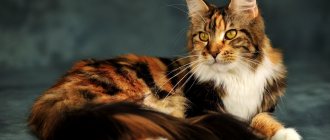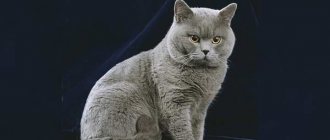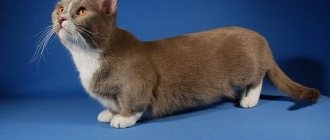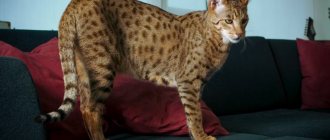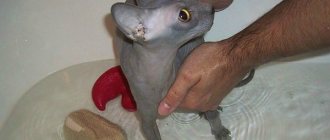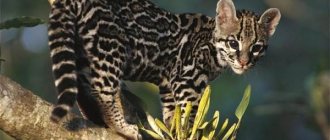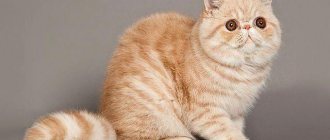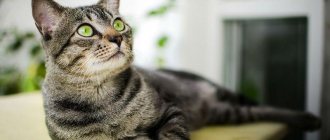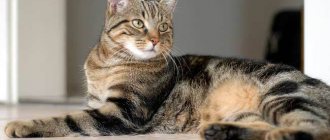Cat breeds that don't shed are the dream of all cat lovers. The constant cleaning of fluff flying throughout the apartment, as well as hairs sticking to clothes, is tiring and seems endless. For this reason, many people get hairless cats - there is no need to clean up their hair for lack of it. But what about those who love cats with fluffy, silky fur? There is a solution - get a cat with a non-shedding coat.
We will tell you in the article which cats do not shed, except for Sphynxes, what is the peculiarity of the hair structure of such breeds, and which purrs to give preference to.
Sphinxes
These are the only cats in the world that have minimal fur or are completely hairless. If you are looking for which cats do not shed because you are allergic to fur, then choose Sphynx cats - they will not cause any trouble. On the other hand, this breed also has its own characteristics. Yes, they don't shed, but they do sweat.
Attention! Be prepared for the fact that instead of wool, brown stains from the sweat of sphinxes will remain on furniture and sofas.
Sphynxes acquire their final appearance at the age of 1-2 years.
The hairlessness of these breeds is explained by a spontaneous mutation of a certain gene, and the degree of baldness of cats becomes greater as they age. And cats acquire their final appearance at the age of 1-2 years.
Which cats don't shed? We offer an overview of Sphynx breeds that boast the absence of hair:
- naked: these kittens have no hair at all from birth, and they may not have whiskers, eyebrows, or tactile hairs on their limbs. It is noteworthy that in the cold season, kittens can develop sparse, very fine hair;
- flock, velor: it seems that this is the name of the fabrics. In fact, there are breeds of sphinxes that, instead of wool, have thin and short fluff, similar to velor or kid leather. Flocks can have this type of hair all over their body, while Velors can have hair growing on the face, tail, and legs. If you are looking for which cats do not shed or smell, choose these representatives: as they grow older, they lose what remains of their fur due to the death of hair follicles;
- brush: these sphinxes have long, dense, crimped hair compared to the representatives described above. But in most cases they “undress”, however, this process can take up to 2 years. Hair loss occurs due to vaccinations, weather, food changes or hormonal changes.
As the Sphynx flock grows older, it loses the remnants of its fur due to the extinction of its hair follicles.
Popular sphinxes
Which cats don't shed? This question is most often of interest to those who suffer from certain allergic diseases. This is an almost hairless breed, since Canadians either have no hair or can be up to 2 mm long, resembling a pile. The first Sphynx appeared in 1966, when an ordinary cat with hair in Canada gave birth to completely hairless kittens.
The Peterbald, or St. Petersburg Sphynx, has no fur. Its skin resembles a rubber surface, differing in sensitivity to the sun. Among the completely hairless cats, one can highlight the Don Sphynx.
Rex
Which cats shed little but are beautiful in appearance? Many people like the Rex breed, which has curly hair.
Devon Rex does not cause any allergic reactions
There are many varieties of the breed, and each has its own characteristics, as well as its own color:
- Devon Rex: many people choose these animals because they do not cause any allergic reactions. Devon Rexes have very sparse and short hair, but it needs to be periodically combed, and the kitten itself needs to be bathed, as they get dirty too quickly and become sticky due to sebaceous secretions on the skin;
- Cornish Rex: representatives of this breed have very little hair, and they do not have guard hair, but only undercoat;
- Serkirk Rex: These cats can be short-haired or long-haired, but their coat is wavy and plush and resembles the coat of a sheep. Curls in the form of ringlets are especially found on the belly, neck, chest and panties of animals. So if you're looking for non-shedding cats other than Sphynx cats, go for the Rex. With a minimal amount of wool, they are very beautiful.
It is noteworthy that both sphinxes and rexes have an unusual appearance, and therefore they are valued by lovers of original breeds of pets.
How to care and maintain?
Veterinarians note that any feline pet, regardless of whether it sheds or not, needs to at least occasionally be in the fresh air so that the immune system does not weaken.
Pets with hair loss require special care as they are more likely to develop dermatological diseases. It is worth monitoring your cat’s daily diet and giving her special food that contains all the necessary vitamins and microelements that keep the body normal. Individuals that shed the least are those that are often combed by their owners, especially in the autumn-spring period. If the cat is in pain and discomfort during the procedure, then instead of a brush with metal needles, it is recommended to use a silicone glove with teeth, which is less traumatic for the pet’s skin.
To make the animal shed less, it is bathed with special shampoos, since conventional products negatively affect the condition of the skin and can cause dermatitis and other skin problems. It is worth visiting a veterinarian with your cat at least once a year for a preventive examination. If an animal sheds due to pathological reasons, then special treatment is required.
Siamese-oriental
Representatives of this breed have short hair without undercoat. Due to the minimal hair cover, they are very popular with families with children.
Oriental cats have short hair and a very light undercoat.
Attention! Externally, Siamese-Oriental cats are very similar to wild cats; they have short, smooth and shiny fur.
We offer an overview of which cats shed the least among representatives of this breed:
- Siamese: Siamese have short hair with a well-developed undercoat, and there are no problems with combing them;
- Balinese: thanks to the medium coat and the absence of fluffy undercoat, the cat does not become covered with tangles;
- Oriental: Oriental cats have short hair and a very light undercoat, so grooming them is not difficult at all. They practically do not shed, and dead hairs can be removed by wiping the skin with a special rubber glove;
- Mekong Bobtail: these representatives are very beautiful and graceful. They resemble a regular Siamese kitten in color, but have longer hair. They practically do not shed if they are combed out in a timely manner;
- Burmese: very elegant, graceful cats have an equally mysterious color towards dark shades. Their fur is very short, so there will be no problems with caring for it. But their character is not the kindest.
https://youtu.be/_9CRBe_DaVc
conclusions
These are just a few of the most common breeds of non-shedding, non-smelling cats.
In fact, the choice for beginning cat owners is not limited to just four types of cats, and also includes breeds such as the Munchkin, Peterbald and many others.
Munchkin cat.
Peterbald cat.
Thanks to this variety, every cat lover will be able to choose an animal according to his preferences, without fear that it will begin to shed or that the apartment will become saturated with unpleasant odors.
Shorthair
If you don’t like completely hairless cats, as well as their unusual appearance, then you should pay attention to the graceful representatives among short-haired cats.
Attention! Most individuals have short hair and a small undercoat, so caring for them is very easy.
Of course, if you are choosing which cats do not shed at all, then this breed will not be the best choice for you. We offer an overview of popular shorthair breeds:
- With regular short hair. These animals have undercoat and guard hair of different lengths. Popular among them are the American Curl, European Shorthair, and Kuril Bobtail. They will appeal to those who are choosing which breed of cat sheds the least among shorthairs.
- Plush (with double wool). These representatives have an undercoat equal in length to the awn. Among the popular individuals are the British, Russian blue breed, and exotics.
- Semi-longhaired. There is such a breed. They come in different varieties: without undercoat, like the Javanese, Balinese and Turkish Angora, and with undercoat, like Siberian cats, Karelian Bobtails and Maine Coons. These cats shed a lot, so caring for them is not the easiest.
The American Curl sheds the least among shorthaired breeds.
In general, representatives of the breeds described above will have to be combed frequently. For example, a British cat has very short, soft and thick hair, and the undercoat is very well developed. Accordingly, you need to take care of them every day. The American Curl is distinguished by a small undercoat with a fairly long coat, so it also needs to be combed at least once every 2 weeks.
Separately, it is worth mentioning the Kuril Bobtail, whose coat does not require special care. He is one of the cat breeds that sheds little. The peculiarity of the bobtail coat is that it does not mat due to the hard and long outer hair, and the wool practically does not shed.
Features of non-shedding breeds
Absolutely all breeds of domestic cats lose their fur. The molting process is physiological and normal. There are cats that don't shed too much. In most cases:
- Cat breeds without undercoat or guard hairs;
- Completely hairless breeds and their subspecies;
- Cats with coarse or curly hair.
The listed characteristics of the coat allow cats to shed almost no hair. Some breeds were bred for a special purpose. Most of the world's population loves cats, but what stops people from getting their own pet is their reluctance to constantly deal with pet fur and allergies.
Breeds such as the Devon Rex or Sphynx are great for allergy sufferers.
Why do cats shed?
We told you about which cats do not shed or shed very little. But what are the features of this physiological process, and is it possible to reduce its consequences to a minimum?
All cats shed twice a year - in spring and autumn.
Let's say right away that molting occurs in different ways:
- seasonal: almost all cats shed 2 times a year - in spring and autumn, and in long-haired breeds the hair falls out in clumps, while in short-haired ones it simply falls off. Pets without undercoat are the least susceptible to seasonal shedding;
- enhanced: in some cases, animals begin to lose hair without regard to the season. The food has changed, there has been some stress in his life - all this can lead to hair loss. Any feeling of discomfort in a cat is a reason to contact a veterinarian;
- year-round: in some cats, shedding may be prolonged, for example, due to a lack of vitamins or allergies to food.
It is shedding that frightens many mustachioed owners, and they are intensely looking for which cat breeds do not shed. It’s worth mentioning here that sphinxes and other hairless breeds have their own difficulties that require careful care. In any case, shedding is a natural process when animals need to shed unnecessary or weak hair.
Cats shed due to lack of vitamins or allergies to food
What is an allergy to cats?
The intensity of the allergic reaction depends on the body's tolerance to the allergen. Its signs can appear immediately as soon as a person strokes the cat or even just enters the room where it is located, or after a few hours. There are often cases when allergies do not recur after a long break between the first and second contacts with the animal. This is due to the production of antibodies to allergens. Allergy symptoms are divided into the following groups:
- Respiratory manifestations. Cat protein intolerance causes coughing, sneezing, rhinitis and nasal congestion. With severe allergies, it becomes difficult for a person to breathe due to spasm of the smooth muscles of the trachea and bronchi.
- Reactions of the skin and mucous membranes. Dryness, hyperemia, inflammation and rash on the skin, lacrimation and swelling of the mucous membranes appear after contact with the animal. These symptoms are often the first to appear. If only these signs are present, it is easier to stop the allergic reaction - just do not pet the cat and clean the furniture from its fur more often.
- Disorders of the gastrointestinal tract. Nausea and vomiting indicate that the allergen has entered the digestive tract. You need to thoroughly wash vegetables and fruits, keep the dishes clean, and do not allow your pet to climb on tables (it is better not to let him into the kitchen or dining room at all).
- Deterioration in general health. With a pronounced allergy, a person becomes irritable or, conversely, lethargic, feels weak and has a headache. In this case, you should immediately consult a doctor to diagnose the disease and begin treatment.
Or maybe vitamins?
As we have already said, almost all cats shed – some to a greater extent, some to a lesser extent. What vitamins should I give if my cat sheds a lot? In fact, no remedies are needed for them, unless there are allergic reactions, some hormonal changes, etc. Only a doctor can determine them.
If, nevertheless, no diseases are detected, you can give cats vitamins that will prevent hair loss. These can be either specially developed complexes or any vitamins that contain iodine, sulfur, seaweed extract and B vitamins. Complex vitamins are good because they have a balanced composition, including minerals.
Popular vitamin complexes that can take good care of your pet's fur include Kitty's + Taurin + Biotin, Cat–Fell OK, Laveta Super for Cats, Derm Caps and Derm Liquid. They contain biotin, zinc, taurine, and entire groups of vitamins, which together maintain the natural beauty of animal hair and prevent skin diseases.
Among the popular vitamin complexes are Kitty's + Taurin + Biotin
Remember that any vitamins can be given only after your pet has been examined by a veterinarian, as otherwise it can cause harm.
